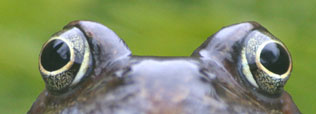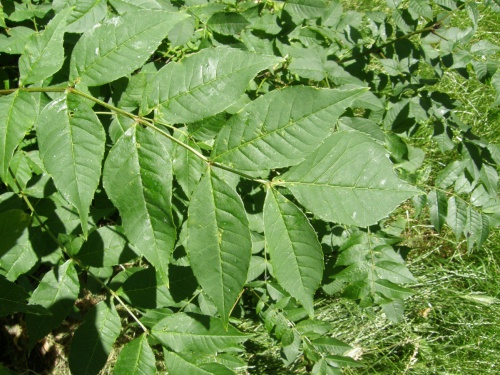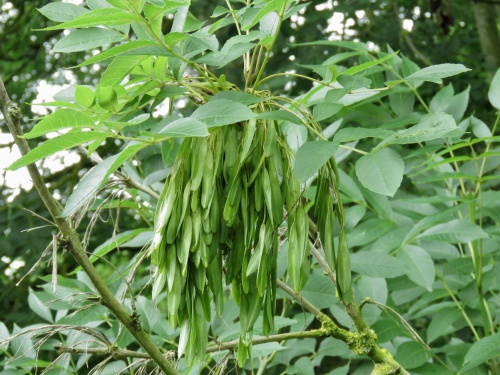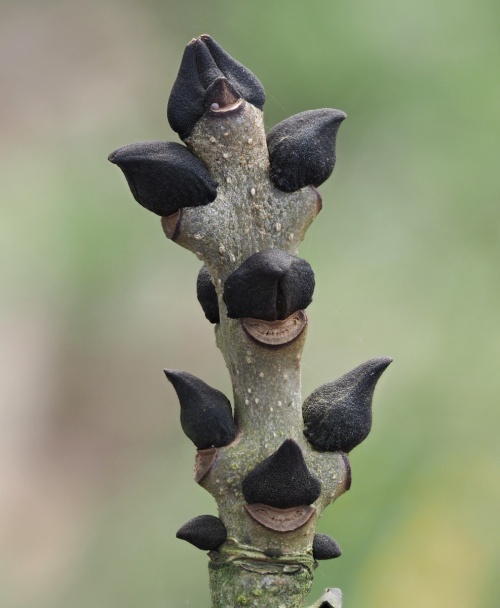Ash - Fraxinus excelsior
Large tree to 40 metres with black winter buds. Leaves pinnate and opposite. Flowers with tufts of dark purplish brown stamens, becoming greenish without sepals or petals, borne in terminal or lateral clusters. Produces bunches of dangling seeds - 'keys'.
Woodland, scrub and hedgerows.
April to May.
Deciduous.
Very common and widespread throughout Britain.
Very common in Leicestershire and Rutland. In the 1979 Flora survey of Leicestershire it was found in 606 of the 617 tetrads.
Leicestershire & Rutland Map
Enter a town or village to see local records
MAP KEY:
Yellow squares = NBN records (all known data)
Coloured circles = NatureSpot records: 2020+ | 2015-2019 | pre-2015
UK Map
Species profile
- Common names
- Ash
- Species group:
- Trees, Shrubs & Climbers
- Kingdom:
- Plantae
- Order:
- Lamiales
- Family:
- Oleaceae
- Records on NatureSpot:
- 739
- First record:
- 01/01/1979 (Patricia Evans)
- Last record:
- 04/05/2024 (Carter, Robert)
Total records by month
% of records within its species group
10km squares with records
The latest images and records displayed below include those awaiting verification checks so we cannot guarantee that every identification is correct. Once accepted, the record displays a green tick.
In the Latest Records section, click on the header to sort A-Z, and again to sort Z-A. Use the header boxes to filter the list.
Latest images
Latest records
Psyllopsis fraxini agg.
The jumping plant louse Psyllopsis fraxini causes a gall to form on the leaves of Ash. The gall is usually on the leaf edge causing it to swell and roll. It starts green but gradually becomes redder with age, often with a chequer-board pattern.
Psyllopsis fraxini galls on Ash are indistinguishable from those produced by P. discrepans and P. distinguenda and have been treated as an aggregate for our recording purposes.


























